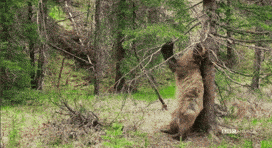- Skills School Forgot
- Posts
- Outdoor Skills Sunday | How to Identify Poison Ivy
Outdoor Skills Sunday | How to Identify Poison Ivy
Happy Mother's Day! Use this guide to identify poison ivy when hiking through the woods with mom. Enjoy

Gif by vulture on Giphy
The Devil’s Plant
No, I’m not talking about some 1960’s sticky icky, I’m talking about the modern day sh***y itchy. Poison Ivy grows in woods across a majority of the United States. The reason I call it the devil’s plant is because when you touch it, the oils create an EXTREMELY itchy rash. I swear just looking at it on the ground is enough to initiate the rash. Let’s take a look into identifying and getting rid of the irritation. Enjoy?
What is Poison Ivy?
Poison ivy is a vine or bush-like plant that blossoms in the woods of North America. In the United States there are three iterations called poison ivy, poison oak, and poison sumac. The oil (Urushiol) that causes the itchy reaction is found on the leaves, stems, and roots of the plant. Contact can be severe enough to form fluid filled blisters on the skin.
Note that the three types of this plant have different severities of rash formation. Poison ivy is considered the mildest (although there is nothing mild about it), and poison sumac is considered the most severe. Poison Sumac, unlike the other two, grows as a tree reaching heights of 10-20 feet.
Identification of the Plant
Poison Ivy

Image 1: Poison Ivy plants
There’s an old saying about poison ivy that goes “leaves of three, leave them be”. Poison ivy changes it’s look through the year going from red, to green, and back to red, but most forms of poison ivy have shiny green leaves of three growing a couple of inches off the ground. They can become vines growing up the sides of trees so be aware when walking in heavily wooded areas.
Poison Oak

Image 2: Poison Oak leaves. Photo from: Poison Oak - Hiking in Portland, Oregon and Washington (oregonhikers.org)
Poison oak has a similar “leaves of three” look but with a rounder leaf that somewhat resembles an oak tree leaf. They start as small plants just a couple inches in height but can grow as shrubs reaching a couple feet in height. The plant isn’t as common as poison ivy, but they are sneaky sometimes growing inside of other bushes.
Poison Sumac

Image 3: Poison Sumac plant. Credit: Poison Sumac vs. Staghorn Sumac: The Major Differences (thespruce.com)
Poison sumac is different from ivy or oak since it grows taller, as a tree, with leaves of 5-13 on its stems. Their leaf shape resembles poison ivy having smooth edges and pointed leaf ends. Another Easter Egg to this plant is its ability to berry throughout the year. Their berries, unsurprisingly, are toxic for humans. Avoid this at all costs if you enjoy sleeping, enjoying life, and not wanting to cut your skin off.
What if I’ve Been Exposed to Poison Ivy
Urushiol is sneaky because it can stay on your clothing for years. Make sure to wash all your clothes after trotting through the woods unless you want to experience the rash weeks later when you wear those “outside only” jeans again.
If you know you’ve been exposed to one of these plants, there is a product called Tecnu to rid your skin of the oil. You’ll need to use it immediately after touching poison ivy to avoid the rash. Tecnu is a liquid that rubs on the skin binding with the oil to inhibit the itchy reaction. If you wait until the rash has formed, you’re stuck dealing with itching until it has run its course.
If you have a bad enough cause of poison ivy affecting your sleep or your face swells up, a doctor may be able to prescribe a steroid to stop the misery. Other home remedies include:
staying in the pool to dry out the skin
going in the ocean to also dry out the skin
hydrocortisone topical creams.
I’ve had poison ivy at least 15 times in my life and I’ll give you a pro-tip. This is probably HORRIBLE for your skin but rinsing the rash with very hot shower water is one of the best feelings in the world.
Know Someone Who Would Love This?
The link below will take you to the magical land of learning also known as the landing page. If you were forwarded this email, you can receive this daily newsletter tomorrow by clicking that blue button below and sharing your email address.

